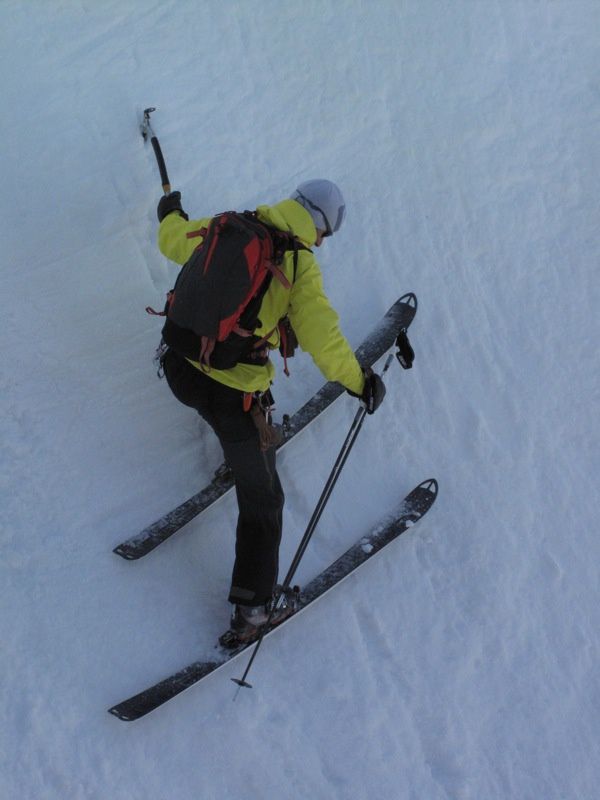thanks for finding that Vallencant - Baud video:
* You mean there actually once existed skis that narrow and that straight?
* Sometimes the skier’s upper body is facing way out of the fall line.
Workshop?
I don’t think the technical knowledge of the instructor / leader is that important - (there’s lots of differing “expert opinions” about that, and different skiers succeed with different technique variations that they’re leaned to make work for them). Skiing steeps is not a “style + beauty contest” where you need a qualified expert judge.
What is important:
Knowing where to find some shorter steep slopes with a safe run-out (and a secure place to put skis on at the top). Because then each skier can try out different things and find out what really works for them, and what doesn’t.
To me its not so critical that those slopes be lift-served—because once you get a good boot-track in for climbing up, it doesn’t take much more time to repeat runs (on a short slope) than skiing all the way down to the bottom of the lift.
Problem with guidebooks is that they focus on identifying and measuring long steep runs, tend to ignore the short ones.
Actually when I’ve been out touring with David, I see him pointing out little couloirs like that all the time.
so . . .
(a) we need to estimate steepness of some of those short “unknown” short couloirs, so we know which ones are appropriate for which snow conditions and for which stages of learning progression.
(b) hike up to one of those “unknown” couloirs, and instead of skiing it once and declaring victory for the day—boot back up and ski it again and again, trying different techniques.
(c) maybe shoot some video of each other skiing it.
(d) maybe the night before get together and look at some videos of great steeps skiers and talk about what we see and what we want to try the next day.
That’s my idea of a “steep skiing workshop”
Probably makes sense to wear helmets for the occasion. (maybe other padding? like for knees + elbows—or ice hockey shorts for hips)
arrest: Another idea would be play around with arrest techniques. I notice that American skiers are more likely to ski with a “whippet” (or two) than Europeans. (Do people believe that “ski pole self-arrest” actually works? Try and find out.)
? other things to try ?
* putting on skis in a tricky situation.
* taking skis off and putting on crampons in a tricky situation.
* setting up entry by rappel.
Ken


